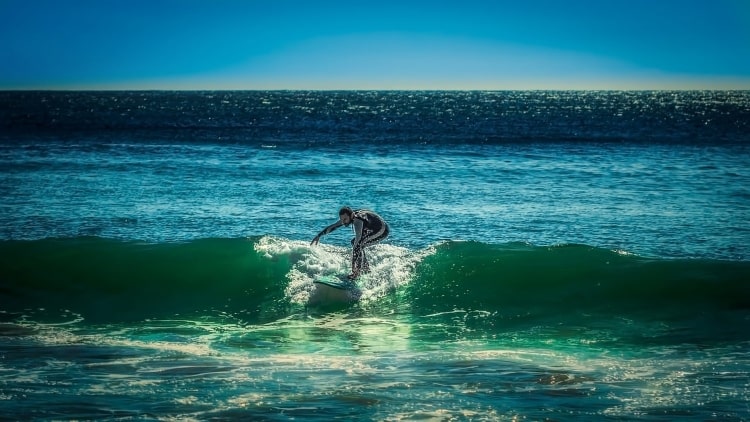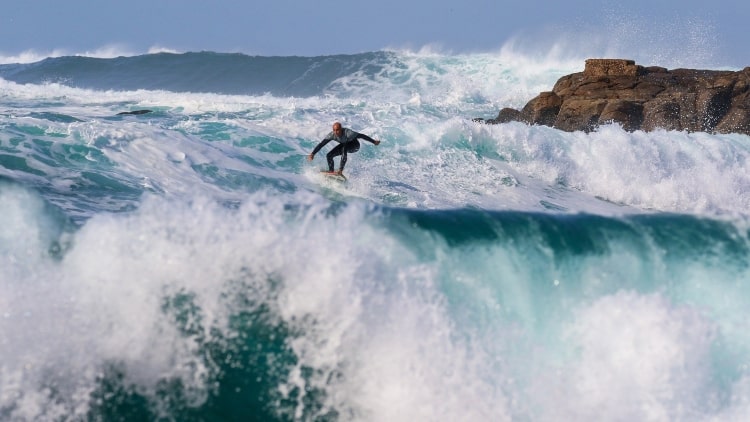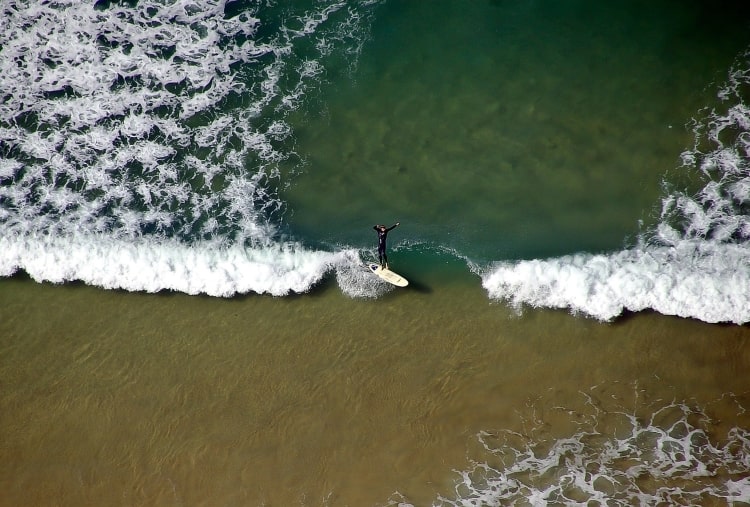
Differences in surf spot types explained
When looking for the perfect wave, it is important to know the different types of surf spots. Below we have listed the different types for you. Take your time and find the right surf spot for you and your next surfing adventure.
Several aspects play an important role in the selection process, such as the season, wind, tides, your surf level, travel and also the infrastructure on site. To find out how the waves break at the location, a surf forecast is very important, as well as to know the respective substrate of the spot; is it sand or reef. The surf forecast helps surfers to better estimate what conditions will prevail at the spot in the next few days and provides information on wave height, wave periods, wind strength and direction from which the wind comes, and also when the tides are.
There are surf spots for beginners, mostly so-called beach breaks. Surf professionals and advanced surfers, on the other hand, like to take the waves of reef breaks or point breaks. We'll explain the differences now:
Beach Break:
In the case of a beach break, the substrate consists of sand and the waves therefore break on a sandbank. In a rare case, the waves can also break directly on the beach, precisely when there are no sandbanks due to a steeply sloping shore, in which case it is also called a shore break. Apart from that, the beach breaks are usually less dangerous than the reef breaks and are therefore particularly suitable for surf beginners and surf schools. The vast majority of surfers therefore start their career at a surf spot with sandbanks.The great advantage of such surf spots is the low risk of injury, as there is no dangerous and sharp-edged reef. Unfortunately, there is also a disadvantage to beach breaks. Sandbanks are structures that can change relatively quickly due to tides, currents and storms. Therefore, the conditions for surfing at a beach break are not always the same, but are subject to constant change.
However, beach break spots are not only for beginners, surfing pros can also get their money's worth, because the further out you paddle, the more power the waves have there. The best-known beach break surf spots in Europe are "La Gravière" in France and "Supertubos" and "Nazaré" in Portugal.

Reef Break:
Unlike a beach break, the waves break on a reef. However, it does not always have to be a coral reef, because rock formations and rocks are also considered a reef. Reef breaks are usually more suitable for advanced surfers, as these spots are more demanding and also carry a higher risk of injury. A wipe-out, as a particularly heavy and spectacular fall is called in surfing circles, can in the worst case end up on a pointed, sharp-edged reef. The great thing about a reef break is the perfectly running waves, which can also break as barrels. Reef breaks are especially appreciated and loved by surf pros, especially because of the surf tubes.The most famous spots in the surf world are "Pipeline" in Hawaii, "Cloudbreak" in Fiji and "Teahupoo" in Tahiti.

Point Break:
A point break is a surf spot where the waves break into a bay on a long coastline or headland. These point breaks are characterised by its long and fast surf rides that break to the left or also to the right. However, the perfect surfing conditions at these surf spots can usually be rare, as they depend on the right swell and wind direction. However, when the perfect conditions are present and the point breaks are working, every surfer and surferess gets their money's worth. Here you can really let off steam with great and long waverides at high speed.Some of the most famous point breaks are "Jeffrey's Bay" in South Africa, or "Bells Beach" as well as the "Gold Coast" in Australia, "Rincon" in California and "Imsouane" in Morocco.




